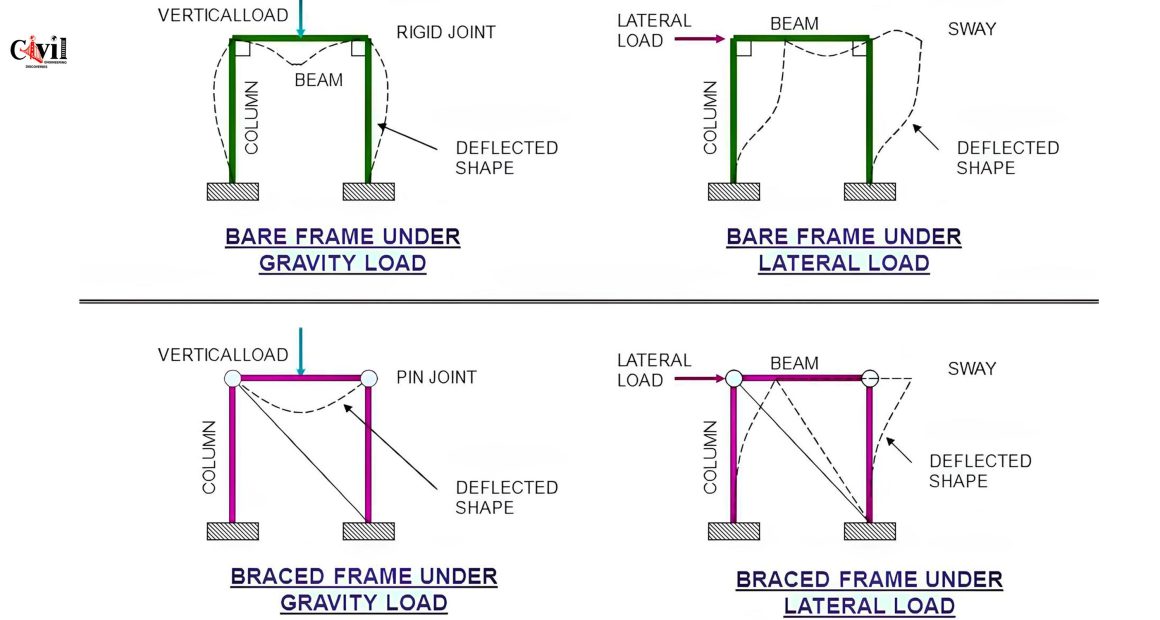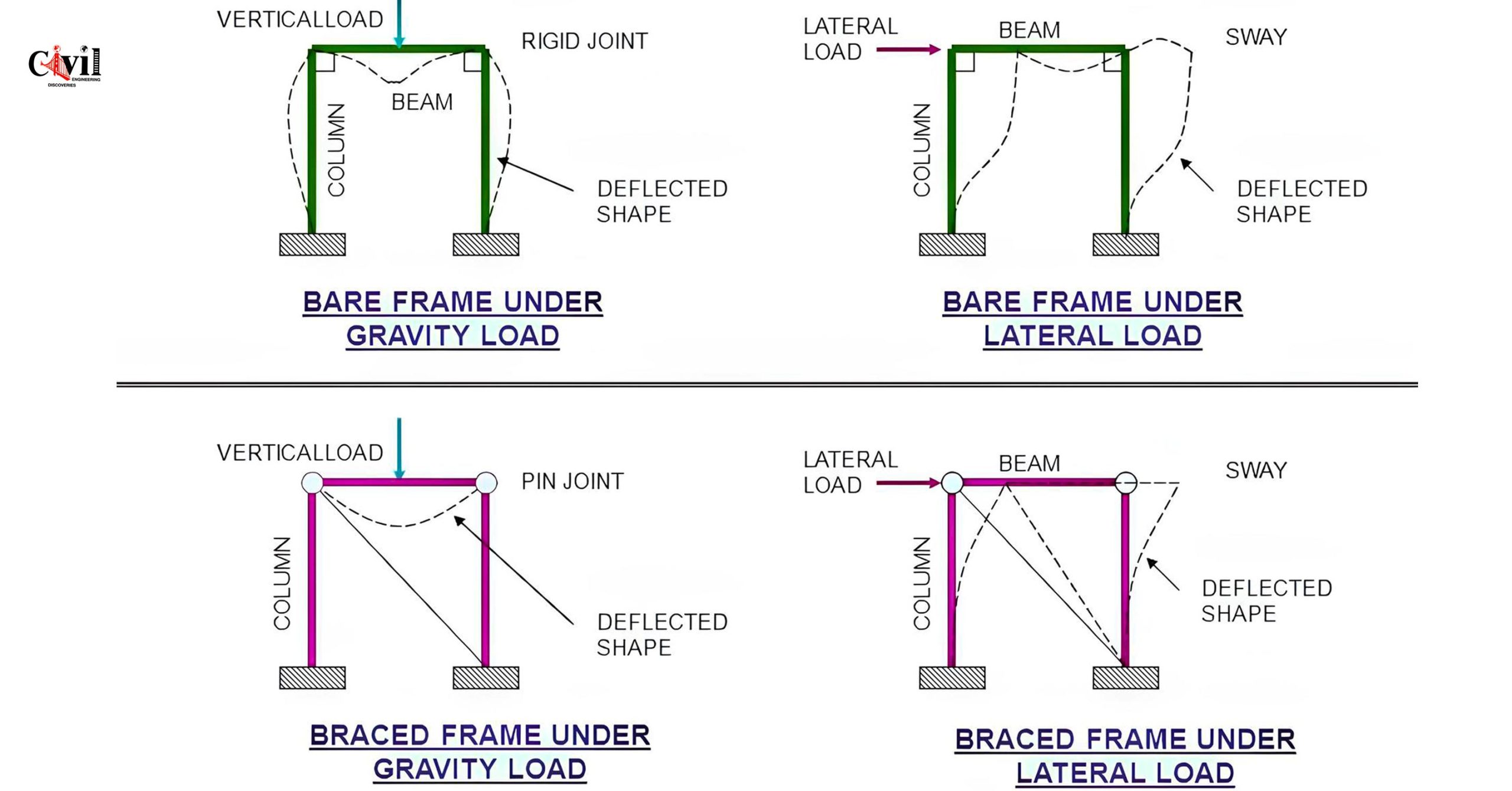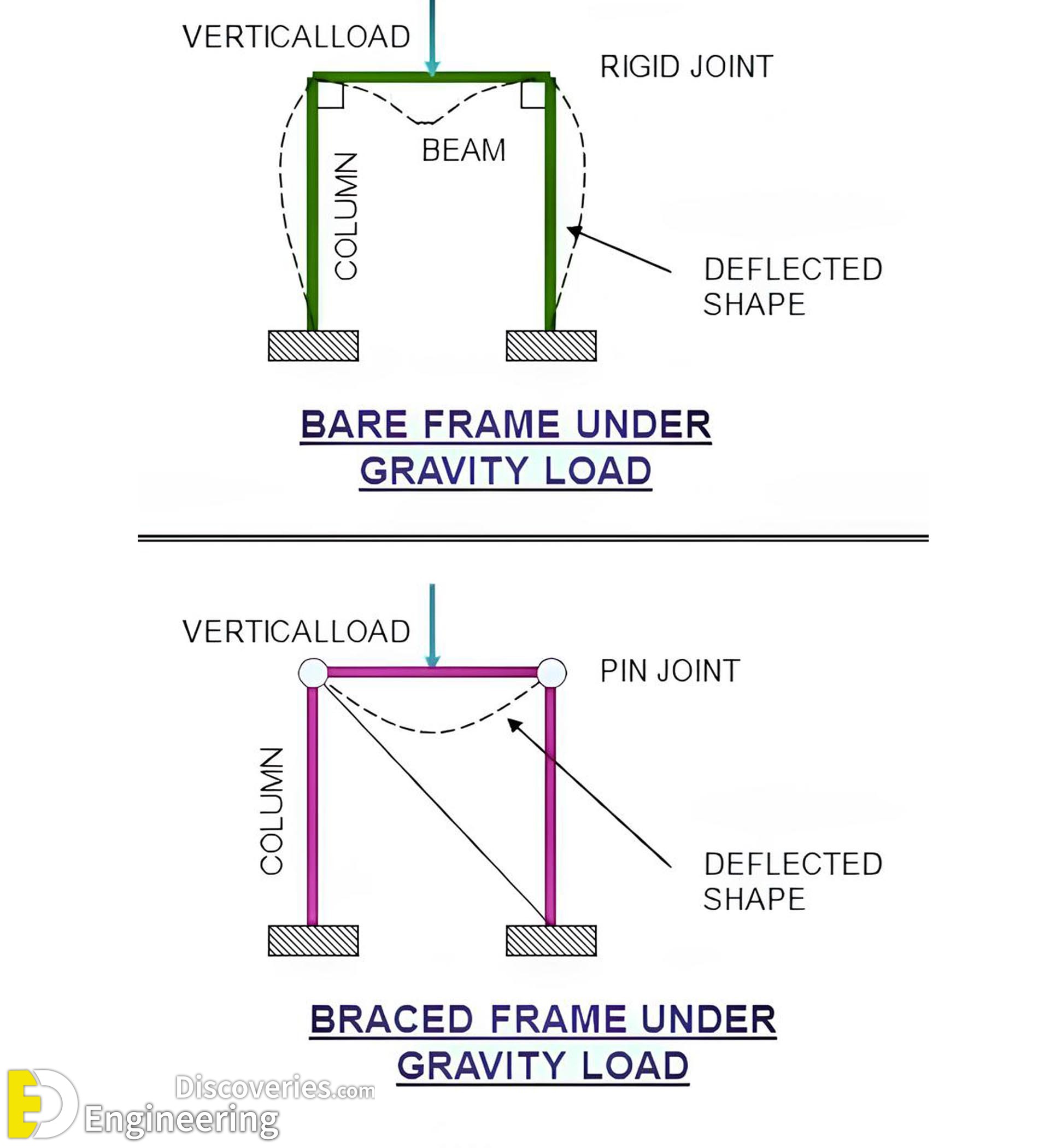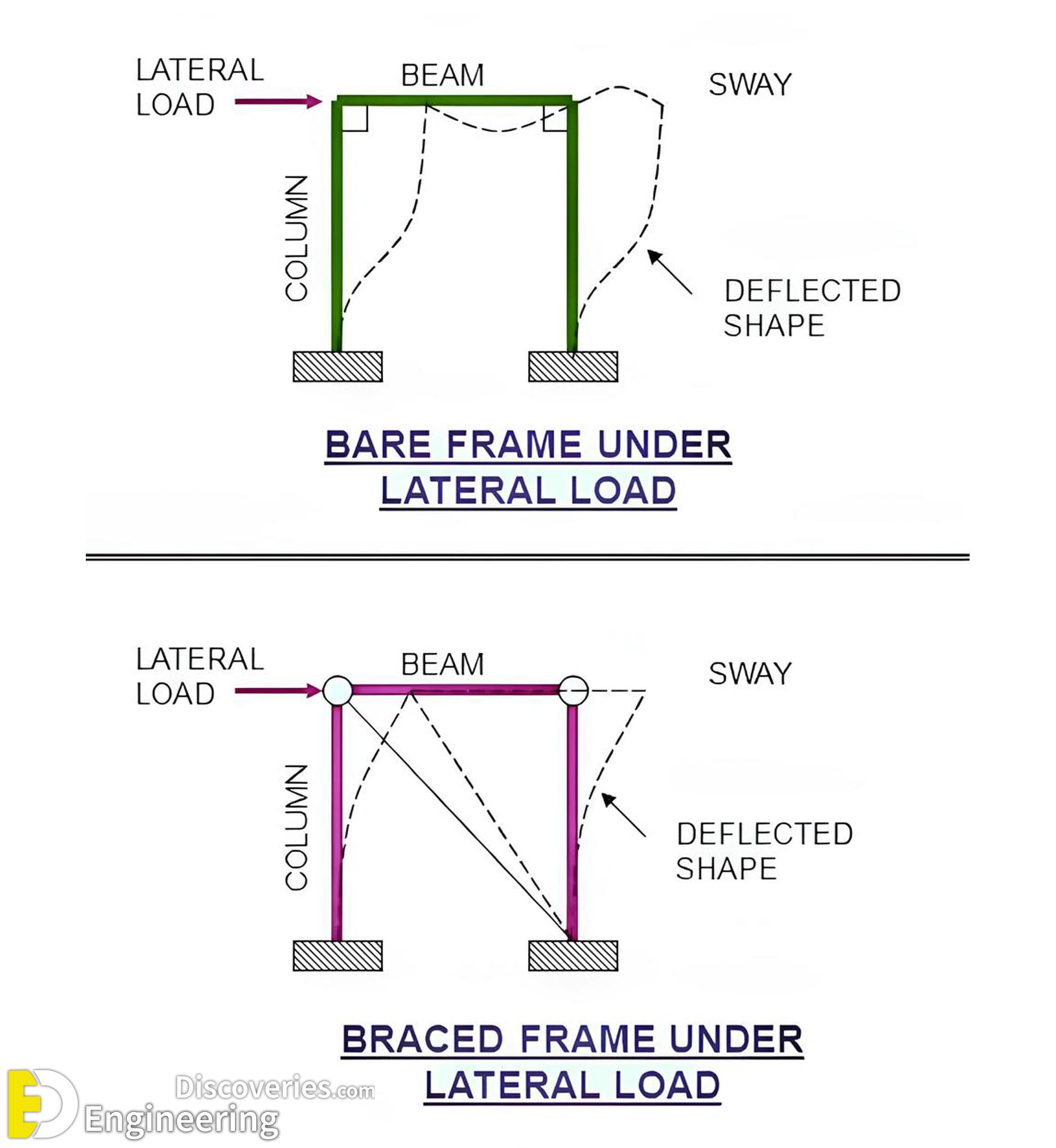Structural framing systems play a crucial role in ensuring the stability and durability of buildings. The way these frames respond to different loads is essential for structural integrity, especially in modern construction where different types of loads are consistently encountered. In this article, we explore how bare and braced frames behave under gravity and lateral loads.
Types of Loads in Structural Engineering
Structural frames are primarily subjected to two types of loads: gravity loads and lateral loads. Understanding how frames react to each load type helps in designing safe, resilient structures. Let’s delve into each type:
1. Gravity Load
Gravity load refers to the vertical load acting on a structure due to the weight of all structural elements, fixtures, and inhabitants. It’s a crucial consideration in structural design to ensure stability and prevent collapse under a building’s own weight.
2. Lateral Load
Lateral loads, on the other hand, are horizontal forces exerted by factors like wind, seismic activities, or other sideward pressures. These loads often result in swaying or horizontal movement in frames and can be more challenging to manage.
The behavior of Bare Frames Under Different Loads
Bare frames, typically without any bracing or additional support systems, react distinctly under gravity and lateral loads.
Bare Frame Under Gravity Load
A bare frame subjected to gravity load experiences a vertical force that causes a deflection in the beam. The deflection shape shows slight bending but remains largely stable as the frame accommodates the load due to the rigid joint connections between the columns and beams. However, without bracing, the stability relies solely on the rigidity of these joints.
Bare Frame Under Lateral Load
When a bare frame is subjected to lateral load, it faces a significant challenge. The lateral forces induce sway in the structure, making the columns bend sideways. This sway increases the risk of structural instability, especially during strong winds or seismic activities. Without bracing, the frame’s resistance to lateral displacement is limited, making it more vulnerable to collapse under excessive horizontal forces.
Advantages of Braced Frames in Load Resistance
Braced frames incorporate additional structural elements, such as diagonal braces, which significantly enhance their stability and load-bearing capacity. These braces restrict movement and provide additional pathways for force distribution.
Braced Frame Under Gravity Load
In a braced frame, gravity load has less effect on the frame’s deflection due to the additional support provided by the braces. The braces help in distributing the load more effectively, reducing deflection and enhancing stability. The presence of pin joints also ensures that forces are transferred efficiently, reducing stress on individual elements.
Braced Frame Under Lateral Load
Bracing offers significant advantages when lateral loads are introduced. The braces counteract the horizontal sway that would otherwise occur, maintaining the frame’s vertical alignment. The pin-joint system, combined with braces, makes the frame far more resistant to lateral forces, which is essential for structures located in regions prone to high winds or seismic activity.
Comparing Bare and Braced Frames in Structural Stability
The key difference between bare and braced frames lies in their ability to handle lateral loads. While bare frames can withstand gravity loads to some extent, they are much more vulnerable to lateral forces. Braced frames, with their additional structural reinforcements, are superior in handling both gravity and lateral loads.
Bare Frame Limitations
Bare frames, especially under lateral loads, show significant deflection and sway, which may compromise stability and safety. These frames are generally suitable for structures that are less exposed to horizontal forces.
Braced Frame Advantages
Braced frames offer enhanced resistance to both gravity and lateral loads, making them ideal for high-rise buildings or structures in earthquake-prone areas. Their ability to maintain alignment and resist sway under horizontal forces makes them a safer and more resilient choice for most modern constructions.
Click Here To See End Moment Reactions For Beams With Both Ends Fixed Under Various Loadings








